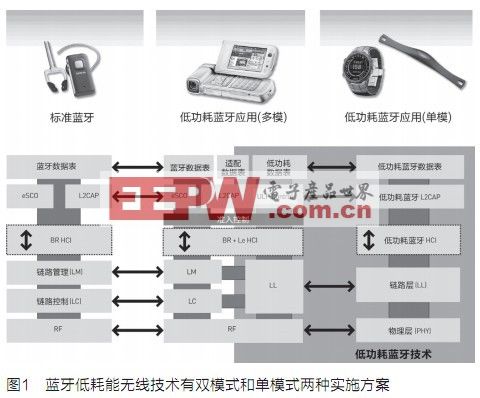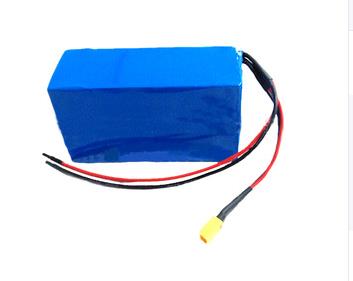Using wireless technology to reduce medical expenses
ON World's August 2008 report ("Wireless Sensor Networks for Healthcare") concluded that by 2012, the use of WSNs that were worn around would save the healthcare industry $25 billion. So it is not surprising that the health care system has this desire. Moreover, if the predictions about the increase in chronic patients are correct, the savings may be more. However, even with such obvious advantages in the economy, wireless technology is not currently used to monitor health. The question is why not?
Medical institutions urgently need practical health monitoring wireless devices, and patients can wear it and live normally at home. The body-worn wireless sensor network (WSN) uses inexpensive, interoperable, undisturbed ultra-low-power (ULP) wireless sensors that connect to real-time displays, such as watches, and then connect to home computers. On, while the computer is connected to the Internet. With this innovative wireless sensor network, patients don't have to be hospitalized or can shorten their hospital stay, but they can still keep in touch with their hospitals.
Let healthcare enter the home
Sending patients out of the hospital is not only beneficial to the budget of the health care institution. It is good for them to recover from their own homes. They know that it is safe. If there are any problems, the doctor will know immediately. People who are just getting sick will also benefit because they are more likely to find a bed in the hospital. In addition, community care services can be reduced because nurses do not have to go around to do routine measurements, such as measuring blood pressure, measuring pulse, and measuring blood sugar.

Moreover, it is also good for the “aged†population. Traditionally, when the elderly are weak, they leave their homes and go to the nursing home. Regrettably, this decision is usually made in the interest of the authorities, not in the interests of the individual, because it is much easier to collectively monitor the health of older people in an institution rather than in their own homes – albeit more expensive. This means “encouraging†older and more capable older people to leave their homes, although they don’t want to. With wireless monitoring, healthcare organizations are able to stay alert to the health of older people while allowing them to stay at home for as long as possible. This method can greatly reduce costs, and patients will be happy. Wireless sensors can be used to monitor vital signs and to know if an old person is falling. Bluetooth technology challenges
Advanced wireless technology is now widely used in almost all sectors, but the medical sector is a notable exception. If you take into account the strict requirements of the medical profession, this may not be surprising. The medical community has made these requests because it is necessary to ensure that the technology chosen does not increase the risk of user health and is completely reliable. So, for a wireless technology, what do you need to do to meet the challenges of medical monitoring? Interoperability - an open standard is needed, so that products from different vendors can communicate with each other; sensors - need to be accurate Reliable and simple pairing, plug and play, automatic recovery of functions; ultra low power consumption (ULP), long battery life - sensor requires low power RF radio communication system, simple protocol, with a button The battery can run for months or even years; system and equipment security - transmission of data must be secure, secure, and confidential for medical data; transmission network - sensors need to communicate with the Internet and mobile phone networks to transmit information to Health care workers in the distance; there are compelling examples of applications for adoption - medical institutions are very conservative and need a compelling reason to adopt new technologies.
Low-power Bluetooth technology meets all of these requirements. For example, its protocol stack is small, so the radio communication system consumes very low current when transmitting or receiving (and can enter a "sleep" state that requires only a few nanoamps), and low-power Bluetooth technology supports AES encryption wireless. Communication. In addition, Bluetooth low energy technology is an open standard that ensures that sensors from different manufacturers quickly and easily establish communications. Because low-power Bluetooth technology is built on the basis of Bluetooth wireless technology, it is easy to form a personal area network (PAN), which includes several sensors, such as measuring arrhythmia, blood pressure and oxygen content, with a "host" The device communicates.
Bluetooth low energy technology
Low-power Bluetooth technology optimizes power and cost, providing a compact, low-cost, ultra-low-power (ULP) transceiver for PUID (Personal User Interface Devices such as Watch) sensors for sports, health and wellness , remote control, proximity detection, mobile phone accessories and human interface devices (HID). More importantly, low-power Bluetooth technology is an open standard that encourages many manufacturers to produce such chips, ensuring that there are many channels to supply, which are required by health authorities.
According to the Bluetooth Technology Alliance's tentative number for single-mode Bluetooth low-energy chips, it has two features that meet the ultra-low power requirements of health monitoring wireless sensors: low current requirements and wide bandwidth. The Bluetooth Technology Alliance says that the maximum current consumed by this chip is less than 15 mA at a transmit power of 0 dBm (according to the power limit of the license-free 2.4 GHz band, which is sufficient for a distance of 10 m), which is slightly lower at reception. At 15mA.
In addition, the Bluetooth Technology Alliance stated that the Bluetooth low energy chip has a bandwidth of 1 Mbit/s. This bandwidth has been carefully selected because the experience of ultra low power patented technology for many years in the field shows that for applications targeted by Bluetooth low energy wireless technology, 1 Mbit/s is the best trade-off for bandwidth. The trade-off is between the transmit power and the duty cycle. The transmit power rises as the bandwidth increases. When the amount of data is constant, the duty cycle decreases as the bandwidth increases. For example, when a Bluetooth low energy chip runs at 1 Mbit/s, the maximum operating current of 15 mA is only one quarter of the typical IEEE 802.15.4 radio communication device operating at 250 kbit/s and emitting 28 mA. , you can send the same amount of data.

If it has not been operated for a long time, its RF transceiver enters deep sleep mode, which can further reduce the power consumption of the wireless sensor. Although the number of Bluetooth low-power sleep mode has not been announced, compared with Nordic Semiconductor's similar ultra-low-power RF patent technology, it shows that it consumes tens of microamps in the "standby" state, in deep sleep state (or "shutdown" "State", maybe consume 900 nanoamps. This small amount of power is enough to keep the two AA batteries in use for months or years.
Bluetooth low-energy chips can, for example, wake up every 10ms to hear if a signal is coming (consuming about 15 mA in a short period of time) and then return to deep sleep, and the current consumed remains On average, only a few tens of microamps Pass the data to the doctor
The advantage of low-power Bluetooth technology over other wireless technologies is how to transmit the data generated by the sensor to the doctor. This is because the sensor can communicate directly with the Bluetooth chip of the ubiquitous mobile phone. The mobile phone can be used as a host for a specially designed sensor personal area network on the person, ensuring that communication is carried out safely. Most importantly, almost everyone has a mobile phone.
Mobile phones have computing power, which means that sensors can send "raw" data - because mobile phones can do whatever they need - which simplifies their design and saves power. The mobile phone can store the data and monitor whether the vital signs are within the specified range. If a problem occurs, the mobile phone automatically transmits a warning signal to the doctor's mobile phone via SMS.
The High Power Battery Pack is mainly used in various vehicles, ships, aircraft and other internal combustion engines, lighting, energy storage, uninterrupted power supply, mobile communication, portable electric tools, electric toys.there are some differences compared with other normal battery .
1.properties
High power Lithium Battery is a battery that powers a vehicle, usually compared to a small battery that powers a portable electronic device. And normal lithium battery is a kind of anode materials for lithium metal or lithium alloy, using nonaqueous electrolyte solution of a battery, and Rechargeable Battery lithium ion battery and lithium ion polymer battery is not the same
2.discharge power
a 4200 mah high power lithium battery can discharge all power in just a few minutes, but normal lithium battery could not do that completely, so normal lithium battery discharge ability cannot be compared with the high power lithium batteries entirely. The biggest difference between high power lithium battery and onormal lithium battery lies in its high discharge power and higher energy. Since high power lithium-ion batteries are mainly used for automotive energy supply, they have higher discharge power than ordinary batteries.
3.High Power Battery pack can discharge at higher instantaneous current than normal Lithium Battery Pack

High Power Battery Pack
High Power Battery Pack,High Power Battery,Battery Pack,Lithium Polymer Battery
YFJ TECHNOLOGY (HK) CO.,LIMITED , http://www.yfjpower.com